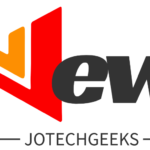Introduction
In today’s rapidly evolving technological landscape, the demand for faster, more secure, and more reliable software solutions is higher than ever. Traditional approaches to development and security are no longer sufficient to meet these needs, leading to the emergence of DevSecOps. A blend of Development, Security, and Operations, DevSecOps integrates security practices within the DevOps framework. This paradigm shift emphasizes security as a shared responsibility across the entire software development lifecycle, enabling teams to create safer, more resilient software at a faster pace. Here’s why DevSecOps has become essential for modern software development and how it addresses the security challenges faced by organizations today.
Definition
DevOps is a group of software development techniques that automate interaction between software developers and operations. This automation can shorten the systems development life cycle and often distribute patches, fixes, and updates. The integration of security protocols into DevOps is known as DevSecOps. Operations, security, and development are what its acronym represents. In an agile setting, these methods focus on creating innovative answers for difficult software development procedures.
The Evolution of DevSecOps: From DevOps to DevSecOps
DevSecOps is an extension of DevOps, a methodology that promotes collaboration between software development and IT operations to improve the speed and quality of software delivery. In DevOps, teams work in tandem to streamline workflows, automate processes, and deploy updates quickly. However, as DevOps evolved, it became evident that security was often left as an afterthought, leading to vulnerabilities that could disrupt operations, compromise data, and damage reputations.
The inclusion of “Sec” in DevSecOps underscores the importance of security in the development lifecycle. DevSecOps makes sure that security is integrated from the start, in contrast to traditional security approaches that involve testing and remediation later in the process. This shift is essential in today’s landscape, where cyber threats are more sophisticated, and breaches can have severe consequences.
Addressing Security Challenges with DevSecOps
Incorporating security within the DevOps pipeline allows organizations to proactively identify and mitigate vulnerabilities, reducing the risk of breaches. DevSecOps addresses several critical security challenges:
- Increased Complexity of Applications: Modern software applications are built using a variety of tools, frameworks, and third-party libraries. This complexity increases the potential for security gaps. DevSecOps enables continuous security checks throughout the development process, ensuring that vulnerabilities are caught early.
- Rising Threats: Cyberattacks have become more targeted, sophisticated, and frequent. DevSecOps provides a defense mechanism by embedding automated security tools and practices that can detect and respond to threats quickly.
- Compliance Requirements: Industries like healthcare, finance, and retail are subject to stringent data protection regulations. DevSecOps helps teams stay compliant by enforcing security policies and implementing regulatory requirements directly within the pipeline.
Key Components of DevSecOps
For DevSecOps to be effective, it must incorporate several key components:
Security Automation:
Automation is at the core of DevSecOps, allowing for continuous security checks without slowing down the development process. Tools for static and dynamic code analysis, vulnerability scanning, and compliance checks can be integrated into the CI/CD (Continuous Integration/Continuous Deployment) pipeline. This automation ensures that each code iteration is secure before moving to the next phase.
Shift-Left Security:
Shift-left security is the practice of incorporating security early in the development lifecycle. By addressing security issues at the code and design stages, teams can prevent costly and time-consuming fixes down the line. This proactive approach involves secure coding practices, threat modeling, and code review sessions to identify potential vulnerabilities before they reach production.
Continuous Monitoring and Incident Response:
DevSecOps emphasizes continuous monitoring, allowing teams to detect anomalies and potential security incidents in real-time. With continuous monitoring, organizations gain greater visibility into their applications and infrastructure, enabling faster detection and response to any security incidents.
Collaboration and Culture:
Implementing DevSecOps successfully necessitates a collaborative culture where everyone takes responsibility for security. Developers, operations, and security professionals work together to create secure applications, fostering a culture of shared accountability. This collaborative approach also enhances communication, reduces bottlenecks, and ensures that security practices are seamlessly integrated into daily workflows.
Benefits of DevSecOps for Modern Software Development
DevSecOps offers several advantages that make it indispensable for modern software development:
Reduced Time to Market:
By automating security tasks and integrating them into the CI/CD pipeline, DevSecOps reduces the time needed to release new features or updates. Developers don’t have to wait for extensive security testing at the end of the cycle, allowing them to push secure code faster and more efficiently.
Cost Savings:
Identifying and remediating security issues early in the development process is more cost-effective than addressing them after deployment. Ponemon Institute study found that addressing vulnerabilities in production can cost up to 30 times as much as correcting them in design. DevSecOps reduces the likelihood of costly breaches and post-release patches.
Enhanced Security Posture:
With security embedded throughout the development process, organizations can reduce the risk of data breaches and cyberattacks. DevSecOps makes it easier to adhere to security best practices, ensuring applications are robust and less susceptible to vulnerabilities.
Improved Compliance:
Security audits and compliance checks are incorporated into the development pipeline by DevSecOps. This capability makes it easier for organizations to meet industry standards and regulations, reducing the risk of non-compliance penalties and improving trust with clients and stakeholders.
Faster Incident Response:
Real-time detection and response to security risks is made possible for organisations by automated incident response systems and continuous monitoring. This rapid response capability minimizes the impact of potential breaches and ensures a resilient application infrastructure.
Implementing DevSecOps: Best Practices
To effectively implement DevSecOps, organizations should follow these best practices:
Start Small and Scale Gradually:
For organizations new to DevSecOps, it’s best to start with a pilot project before scaling the practice across the organization. This approach allows teams to fine-tune processes, identify challenges, and understand the tools needed for a successful implementation.
Invest in the Right Tools:
Choosing the right tools is crucial for automating security tasks in DevSecOps. Tools for static and dynamic code analysis, vulnerability scanning, and infrastructure security should be integrated into the CI/CD pipeline. Tools like SonarQube, Checkmarx, and Aqua Security are popular in the DevSecOps toolkit, but the choice depends on specific needs and compatibility.
Focus on Training and Upskilling:
Security is a shared responsibility in DevSecOps, which means everyone from developers to operations needs to understand security best practices. Offering training sessions, workshops, and resources on secure coding and threat modeling helps ensure that all team members are aligned on security goals.
Emphasize Continuous Improvement:
DevSecOps is not a one-time implementation. Teams should constantly assess their security practices, update tools, and adapt processes to keep pace with emerging threats. This continuous improvement mindset ensures that security practices evolve as the development environment and cyber threat landscape change.
Challenges in Adopting DevSecOps
While DevSecOps offers numerous benefits, implementing it can be challenging. Common obstacles include:
- Cultural Resistance: Shifting to a DevSecOps culture requires a change in mindset, where developers and operations teams accept responsibility for security.
- Tooling Complexity: Integrating security tools within the DevOps pipeline can be complex and may require customization to fit specific workflows.
- Skill Gaps: Security expertise may be lacking in development and operations teams, necessitating additional training or hiring skilled professionals.
- Resource Constraints: Implementing DevSecOps practices and tools can be resource-intensive, especially for smaller organizations.
Growth Rate of DevSecOps Market
The size of the global DevSecOps market was estimated at USD 4.48 billion in 2023 and is expected to grow at a compound annual growth rate (CAGR) of 31.5% from 2024 to 2031, reaching USD 40.05 billion.
Read More: https://www.databridgemarketresearch.com/reports/global-devsecops-market
Conclusion
As cyber threats become more prevalent and complex, organizations must adopt practices that prioritize security without compromising speed and efficiency. DevSecOps represents a transformative shift in how modern software development is approached, offering a framework where security is seamlessly woven into every step of the development lifecycle. By embracing DevSecOps, organizations can produce secure, high-quality software that meets the demands of today’s market while protecting their users and data. In an era where security is paramount, DevSecOps is not just a trend—it’s a necessity for modern software development.


